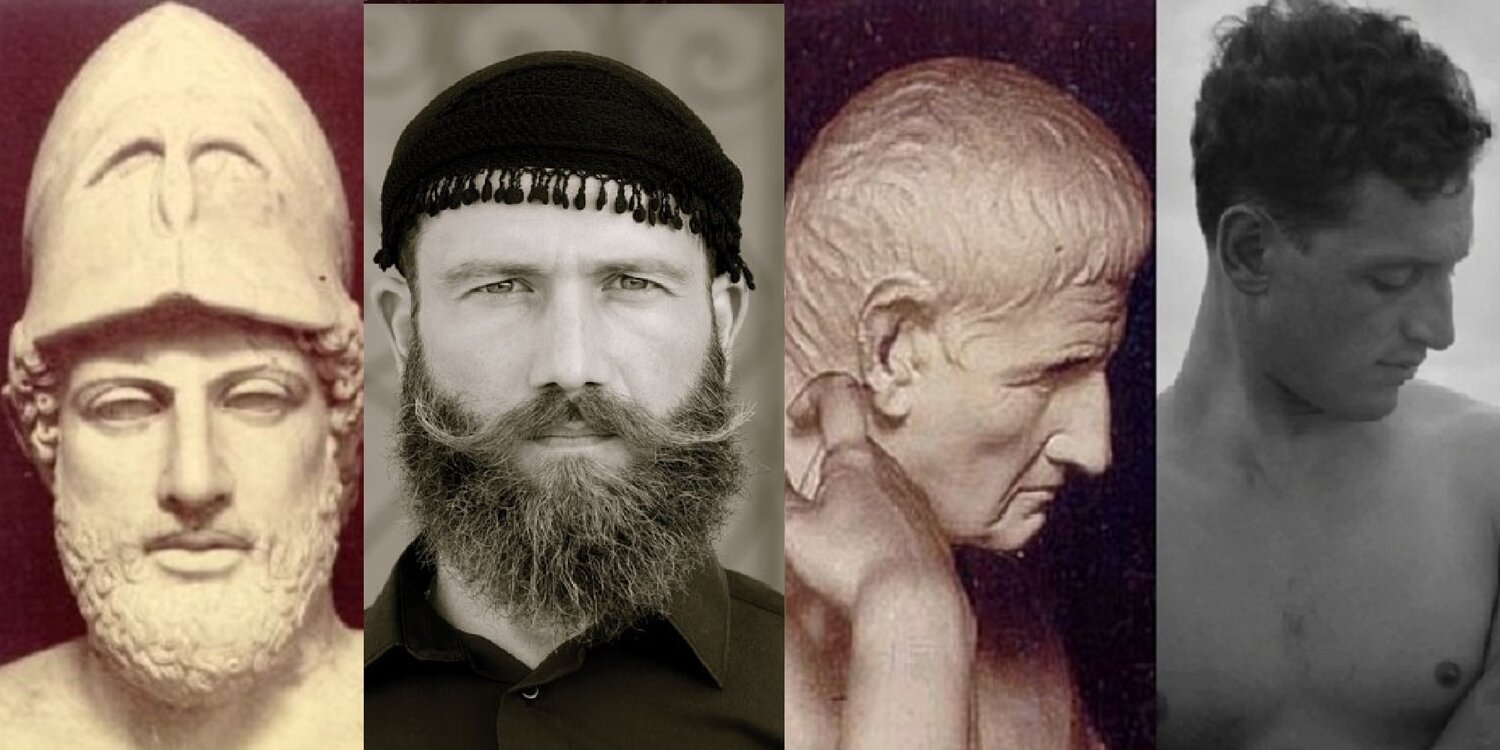The study of racial and cultural traits in ancient civilizations has long fascinated historians, anthropologists, and art historians alike. When it comes to Greece, a civilization with profound historical influence, the question of racial makeup and continuity through the ages has often sparked debate. By examining physical anthropology, literary records, and artistic depictions, we can gain a comprehensive understanding of the racial continuity in Greece from ancient to modern times.
1.
Racial Continuity in Greece: Dinaric-Alpine-Mediterranean Elements
One of the key conclusions from physical anthropology is that Greece has exhibited racial continuity throughout its history. The ancient Greeks, like their modern descendants, were primarily composed of three key racial elements:
Dinaric, Alpine, and Mediterranean
. These racial types are still prevalent in Greece today, signifying a continuity that spans millennia. Importantly, there is no significant difference in the racial type between ancient Greek aristocrats, commoners, and criminals, indicating a consistent demographic throughout various social strata.
-
Mediterranean Type
: Characterized by dark hair and eyes, a long skull, a narrow face, and a lean physique, the Mediterranean type is believed to be associated with the earliest creators of civilization in the Fertile Crescent and extends across a wide geographical range, from the Atlantic to India. -
Dinaric and Alpine Types
: While the Dinaric type is characterized by a long face, a beaky nose, and tall stature, the Alpine type presents a more stocky build with a broad skull and brown hair, common across Central Europe and extending into Greece.
This continuity aligns with modern findings, suggesting that the people of Greece have retained these core racial elements over thousands of years.
2.
Brunet and Fair Individuals in Ancient Greece
Greek literature provides further insight into the racial diversity of the population. Ancient Greek writings mention both
brunet
and
fair individuals
, similar to the variation observed in modern Greece. However, ancient Greeks did not ascribe any form of superiority to one type over the other, demonstrating that, unlike in some later cultures, physical appearance was not directly tied to social or cultural dominance.
This contrasts with certain assumptions made in other parts of Europe, where fair complexion often came to be associated with the nobility or warrior classes. In Greece, the population maintained a balanced view, with brunet and fair individuals coexisting without one being favored in historical texts or art.
3.
Greek Art: A Predominance of Brunet Types
Ancient Greek art, renowned for its beauty and precision, provides valuable visual records of the population’s appearance. Statues, frescoes, and pottery primarily depict individuals with brunet features—dark hair and eyes—with only a small minority of figures shown as fair-haired. Even those depicted as fair are rarely as light as Northern Europeans, and their physical features, such as body build, remain consistent with their brunet counterparts.
This observation underscores the idea that the ancient Greeks were largely
Mediterranean
in appearance, with some variation but little deviation from this norm. It also supports the evidence that fair types, while present, were not as common and did not significantly differ in physique from brunet types.
4.
Greek Self-Descriptions: A People of Intermediate Pigmentation
Ancient Greek descriptions of themselves, as well as their descriptions of other peoples, provide additional clarity on their racial identity. The Greeks perceived themselves as intermediate in pigmentation between the
Northern Europeans
—often described as fair-haired “barbarians”—and the
darker-skinned peoples
of Africa and the Near East.
This positioning reflects both the geographical and cultural reality of Greece: a civilization situated at the crossroads of Europe, Africa, and Asia, absorbing influences from each and existing in a racial spectrum that bridges northern and southern populations. Modern Greeks, too, continue to exhibit this intermediate pigmentation, further cementing the idea of racial continuity in the region.
In summary, the anthropological, literary, and artistic evidence points to a clear racial continuity in Greece, from antiquity to the present day. The predominance of
Dinaric, Alpine, and Mediterranean racial types
has remained consistent, with both brunet and fair individuals being present throughout history. Greek art and literature reflect a society that valued these traits equally, without elevating one type over another. Descriptions of the Greeks themselves suggest that they viewed their pigmentation as intermediate between the paler peoples of the north and the darker peoples of the south—a perception that persists in modern times.
Through these findings, we can appreciate the enduring legacy of the ancient Greeks, not only in their cultural and intellectual contributions but also in the physical characteristics of their descendants, who continue to reflect the diverse yet unified racial composition of their ancestors.
Endnotes:
-
The
Mediterranean type
is defined by dark hair, dark eyes, skin that tans easily, a long skull, a narrow face, and a lean body build. -
Brachycephalic
refers to individuals with broad skulls, while
Dolichocephalic
refers to those with long skulls, and
Mesocephalic
is an intermediate form. -
The
Alpine type
is prevalent across Central Europe and characterized by broad skulls, brown hair, and a stocky build. -
The
Nordic type
, common in Northern Europe, features blonde straight hair, light eyes, a narrow face, and a higher forehead. -
The
Dinaric type
has a long face, beaky nose, short skull, and tall, lean build. -
Studies show that fair-haired individuals comprised only a small percentage of the Greek population, aligning with modern-day figures.
